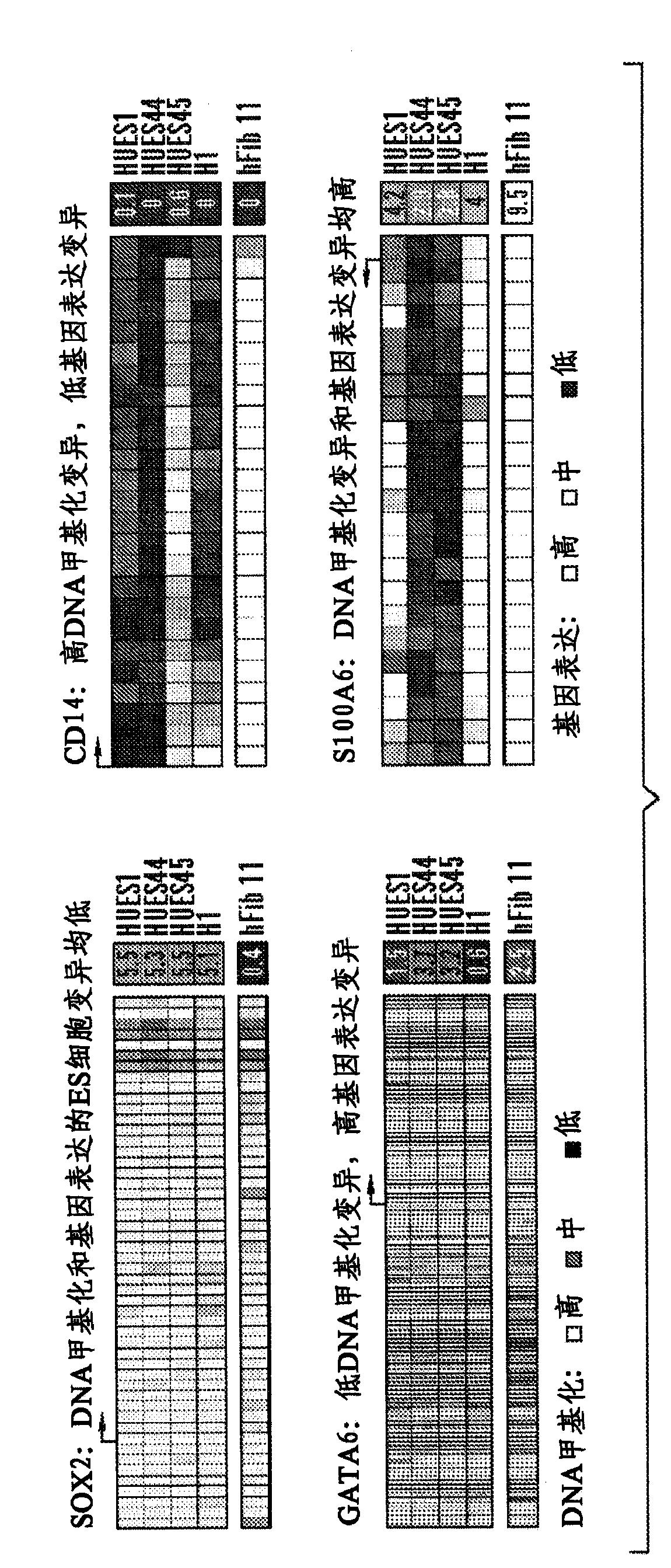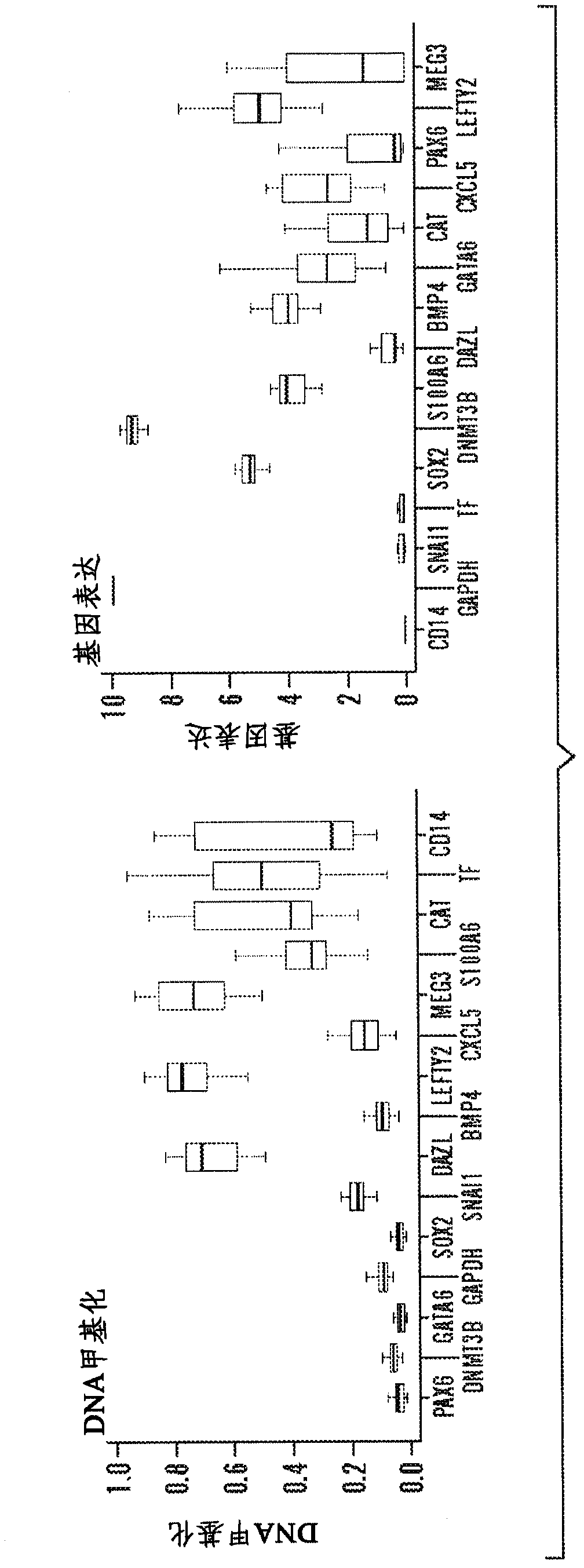Functional genomics assay for characterizing pluripotent stem cell utility and safety
A technology of pluripotent stem cells and pluripotent cells, which is applied in the field of functional genomics research to characterize the utility and safety of pluripotent stem cells, can solve the problems of gene expression markers that cannot be reproduced, and achieve cheap automation and suitable for automation Effect
- Summary
- Abstract
- Description
- Claims
- Application Information
AI Technical Summary
Problems solved by technology
Method used
Image
Examples
Embodiment 1
[0922] Variation in DNA methylation and transcription among hES cell lines
[0923] There are many properties in a given ES cell line that can affect its DNA methylation, transcription or differentiation propensity. These may include the genetic background of the cell line, the manner in which the cell line was cultured, selection pressure exerted by extended in vitro growth, or unexplained random noise. Before attempting to investigate the underlying underlying causes of variation in the performance of pluripotent stem cell lines, it is crucial to first determine the nature and extent of variation present in a large cohort of cell lines.
[0924] To study inter-line variation among pluripotent stem cell populations or pluripotent stem cell lines, the inventors obtained 19 human ES cell lines at low passage numbers (p15-25) and cultured them under standard conditions After several generations, DNA was collected for DNA methylation analysis and RNA for transcriptional profilin...
Embodiment 2
[0935] Causes and consequences of epigenetic and transcriptional variation in human ES cell lines
[0936] To begin to explore the causes and consequences of transcriptional and methylation variation between ES cell lines, the inventors used a "reference map" to quantify the level of variation in these measurements at each locus (Tables 4 and 5). This quantification allowed the inventors to determine the proportion of genes that were mutated, as well as the identity of genes with minimal or substantial changes. The resulting distribution is highly skewed, with only 16% of all genes accounting for 50% of the DNA methylation variation and only 28% of all genes accounting for 50% of the gene expression variation ( Figure 2A ). Consequently, most variation between cell lines was restricted to a subset of loci, suggesting that the characterization of genes in both categories may provide insight into why they change and whether their changes have any effect on a given cell line u...
Embodiment 3
[0943] Global patterns of DNA methylation and transcription were similar between hES cells and hiPS cells.
[0944] The inventor's "reference map" of variation in human ES cell lines allows the inventors to determine the number and identity of genes that deviate from normal in any new cell line by statistical comparison to a "reference corridor" of ES cells. With the aid of reprogramming of defined factors to produce human iPS cell lines for a variety of applications (Park et al., 2008b; Takahashi et al., 2007; Yu et al., 2007), there is a consensus on how to select the most suitable iPS cell line for a given purpose. gradually increasing demand. Mapping DNA methylation and transcriptional variation in iPS cell lines allows one skilled in the art to determine whether there are sites that are systematically different between reprogrammed cells and their ES cell counterparts. Furthermore, this will further help guide the selection of high quality iPS cell lines (similar to what...
PUM
 Login to View More
Login to View More Abstract
Description
Claims
Application Information
 Login to View More
Login to View More - R&D
- Intellectual Property
- Life Sciences
- Materials
- Tech Scout
- Unparalleled Data Quality
- Higher Quality Content
- 60% Fewer Hallucinations
Browse by: Latest US Patents, China's latest patents, Technical Efficacy Thesaurus, Application Domain, Technology Topic, Popular Technical Reports.
© 2025 PatSnap. All rights reserved.Legal|Privacy policy|Modern Slavery Act Transparency Statement|Sitemap|About US| Contact US: help@patsnap.com



